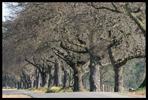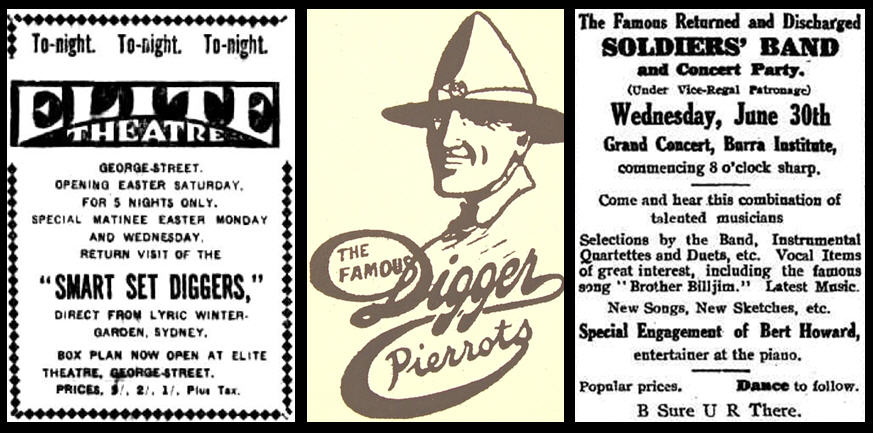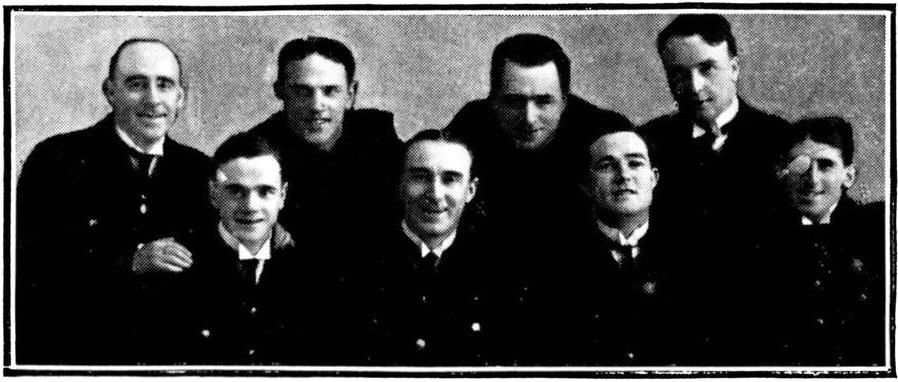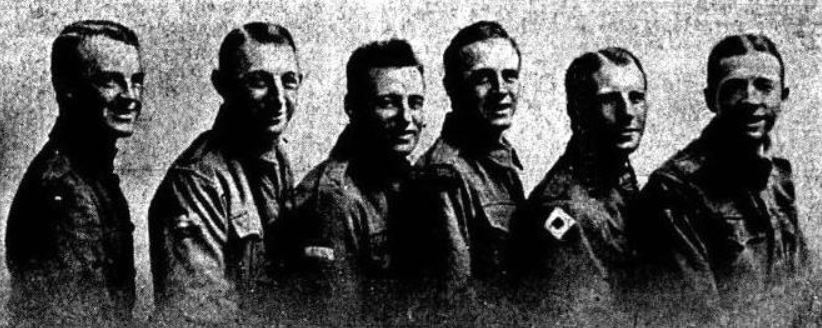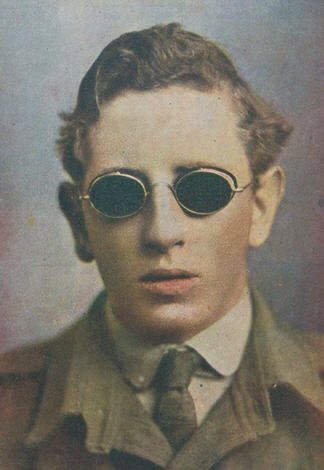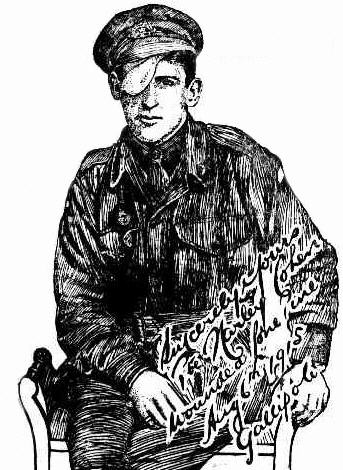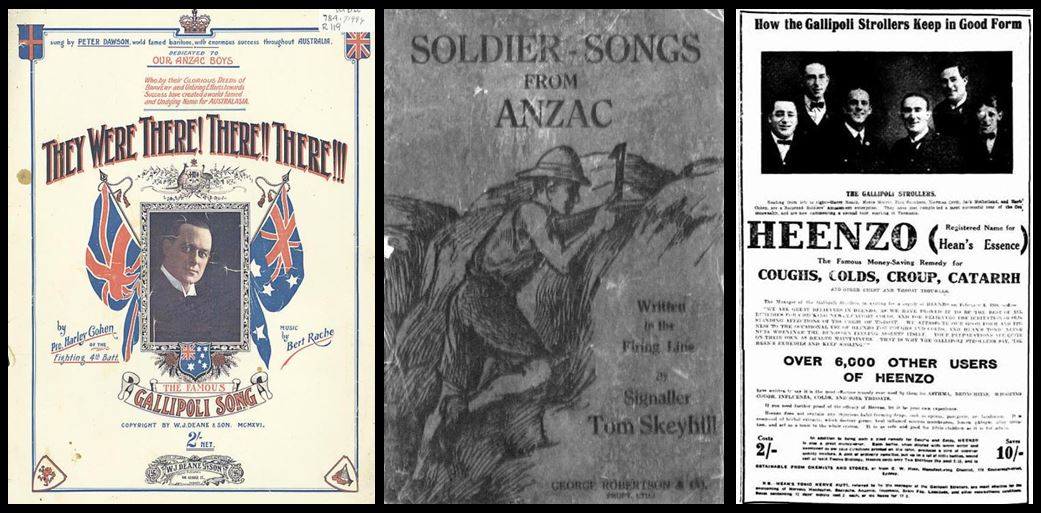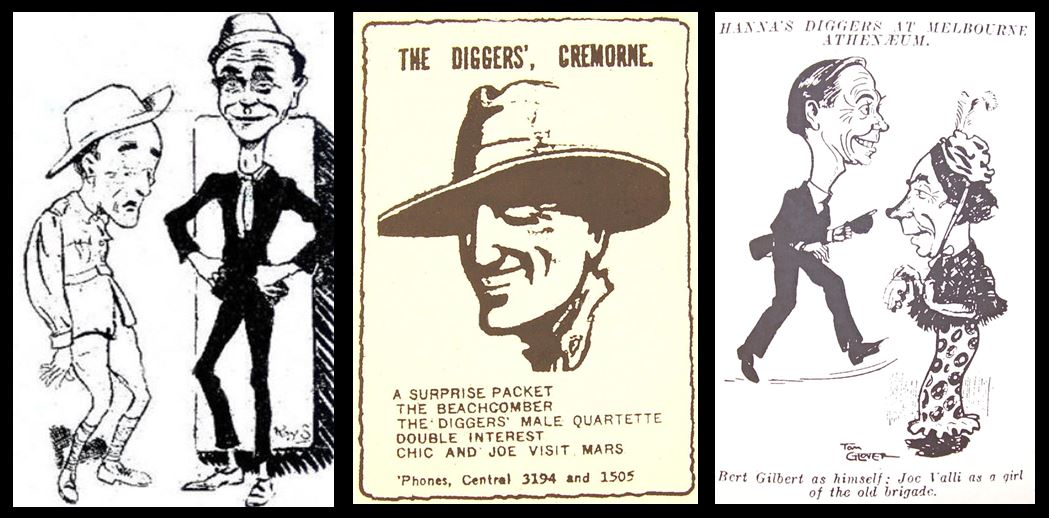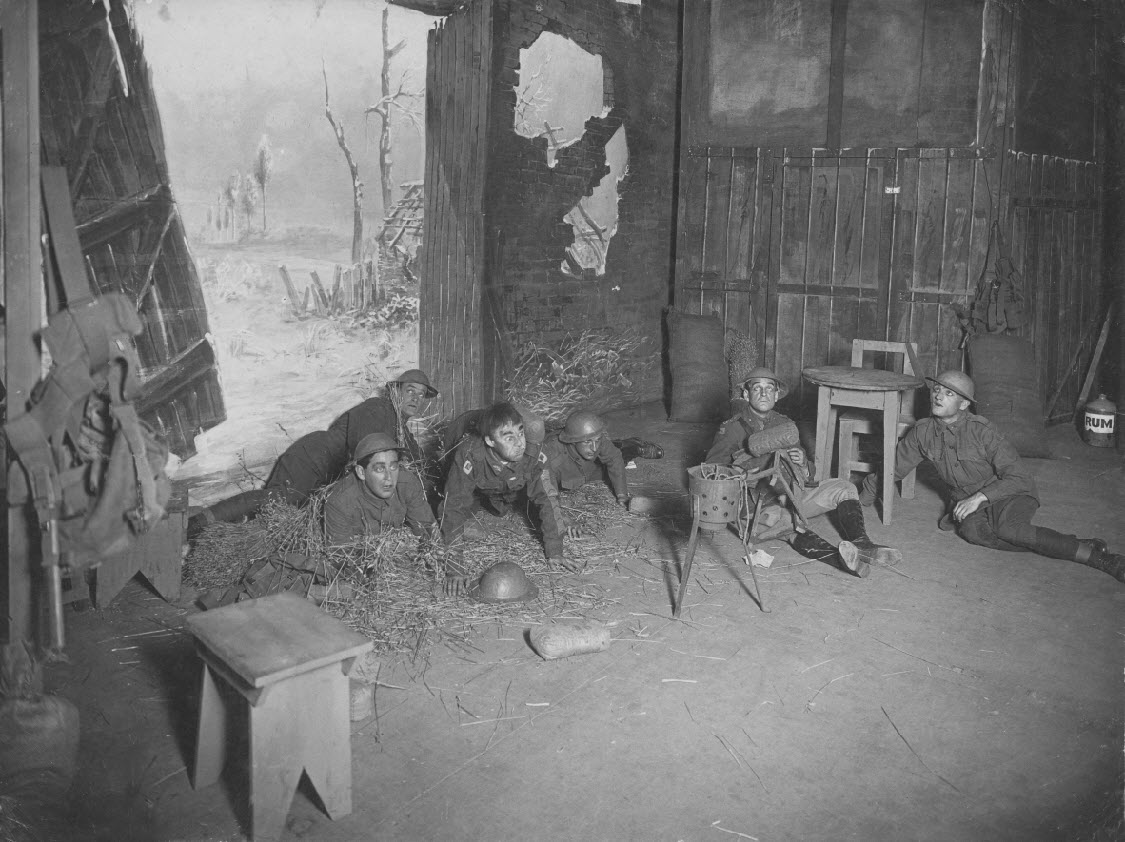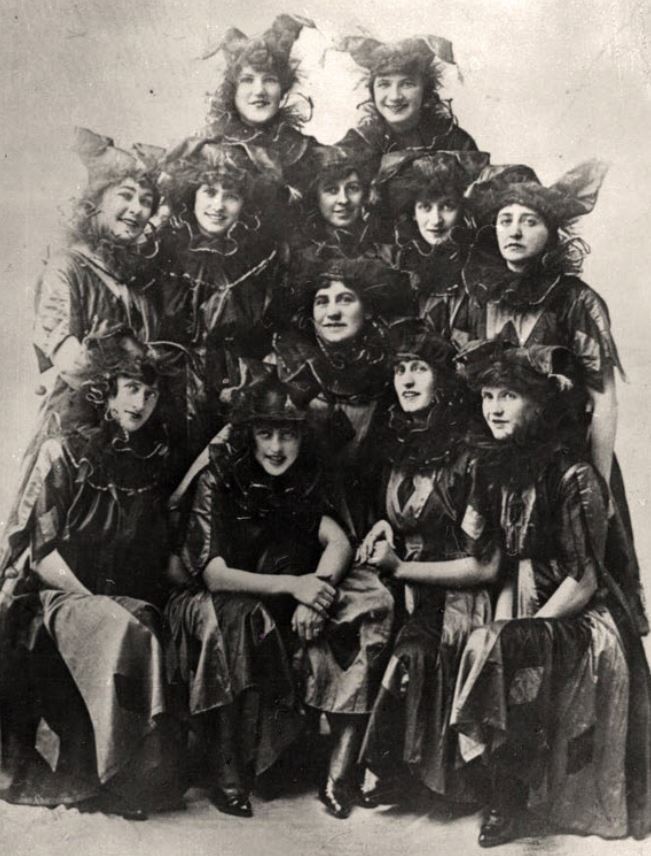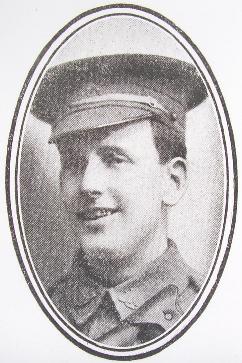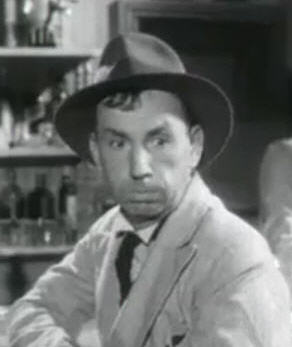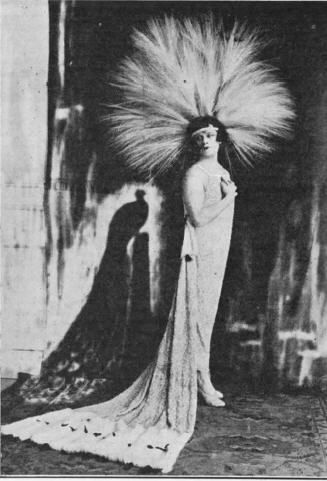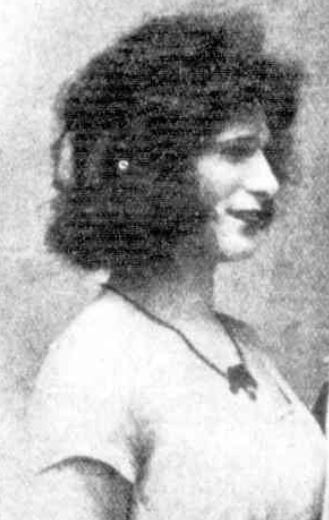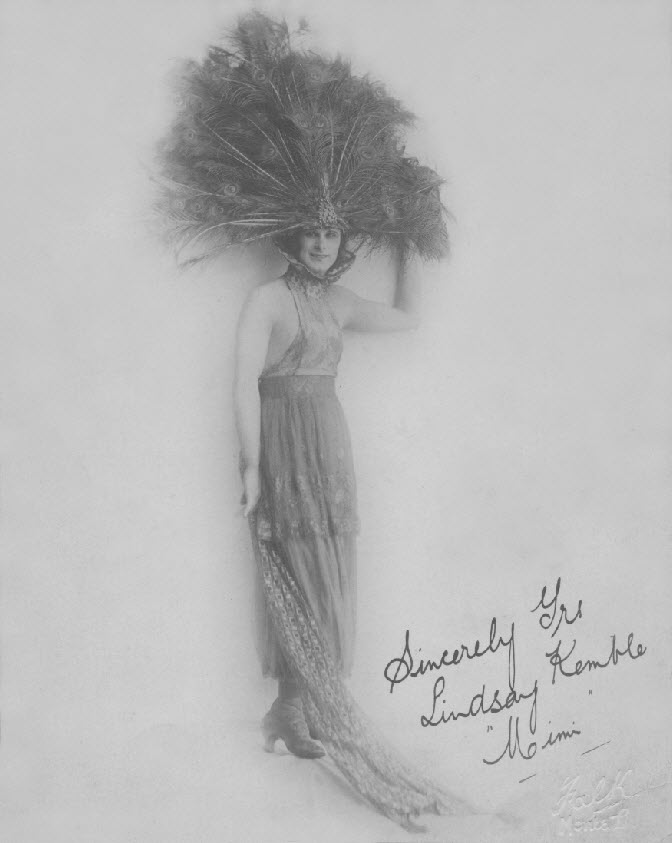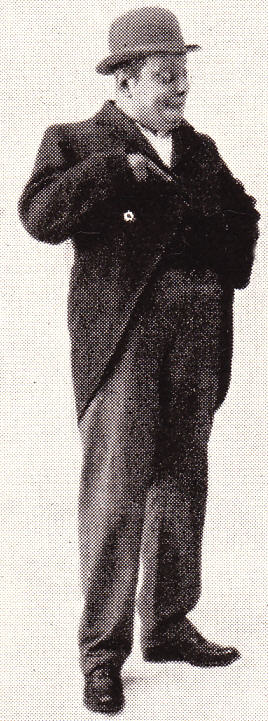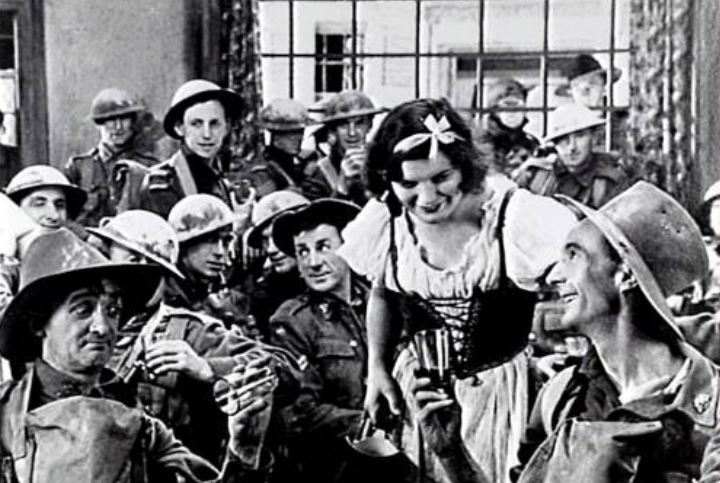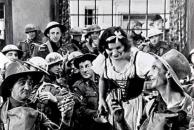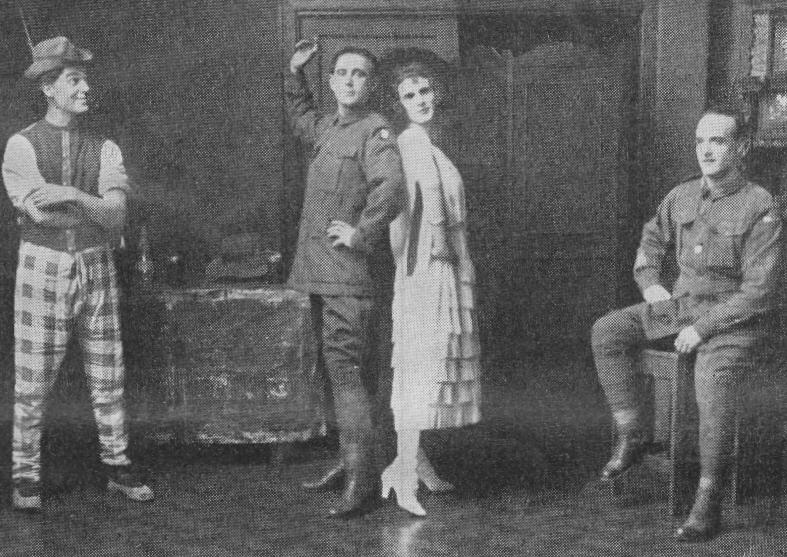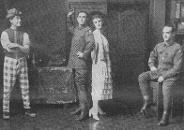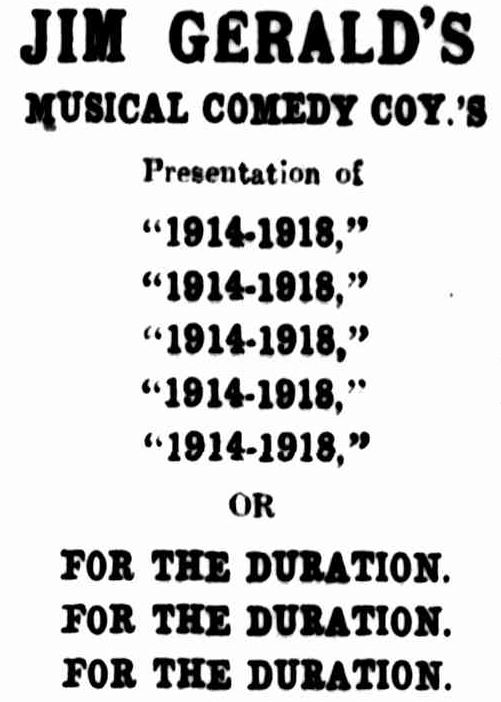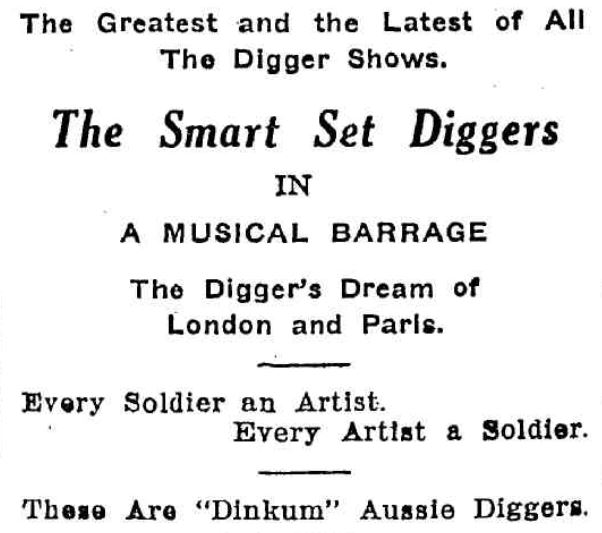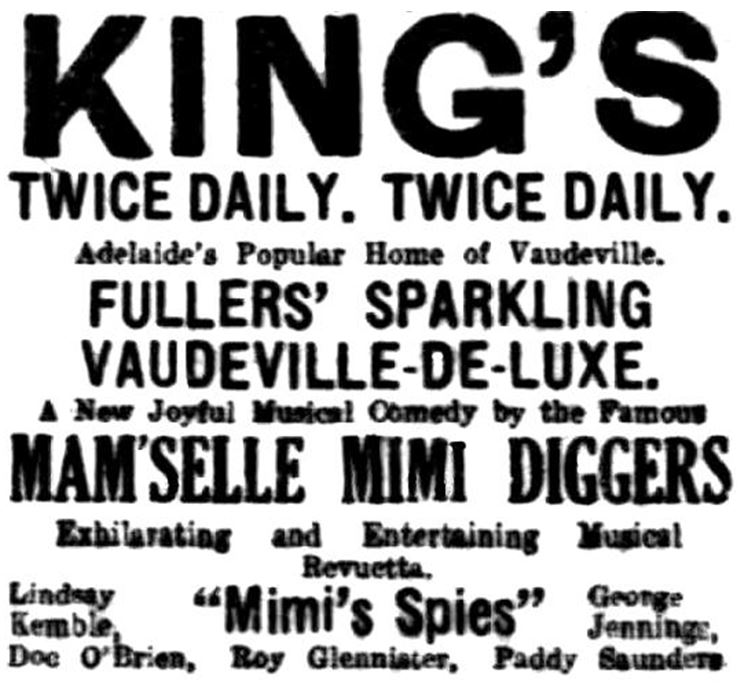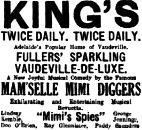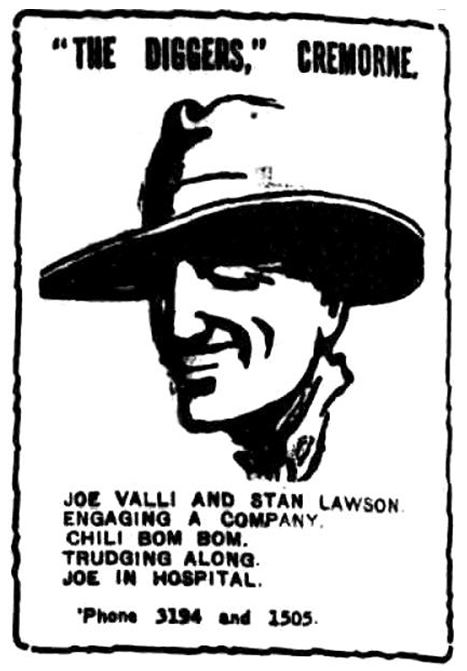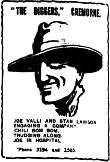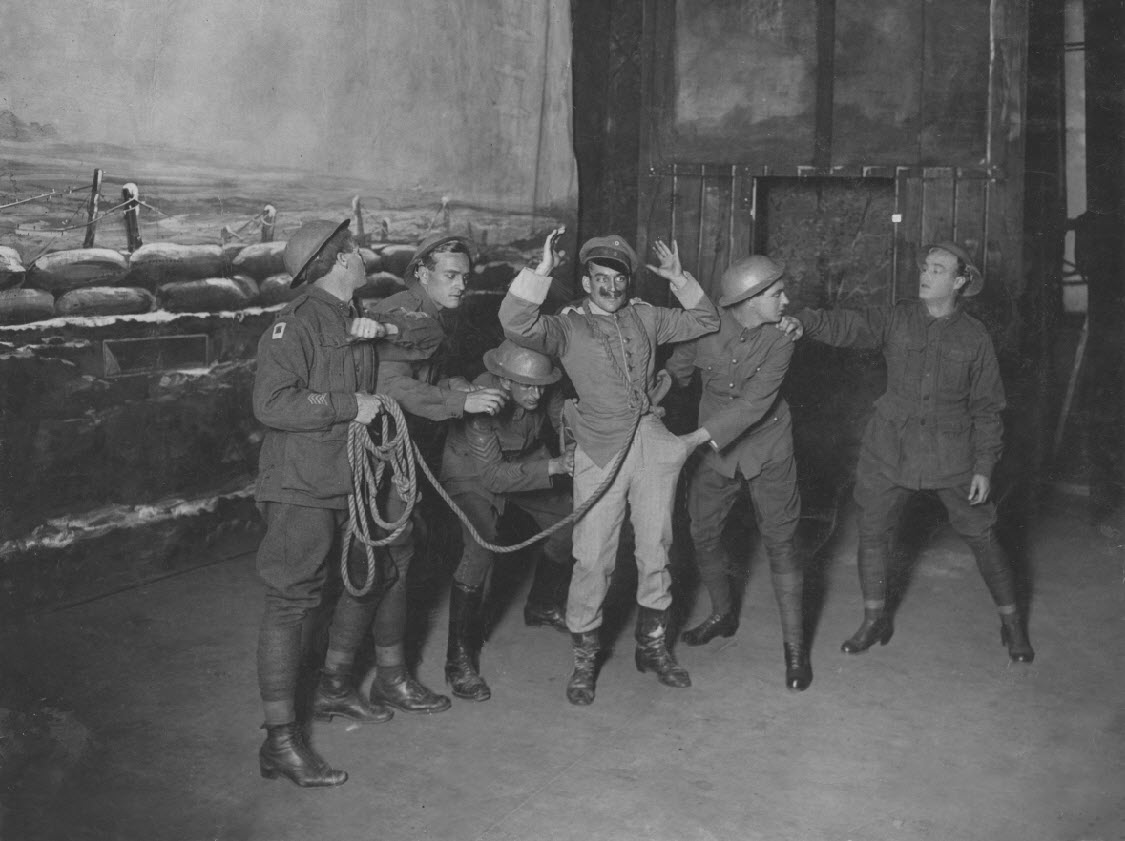AustLit
-
Individual soldier entertainers and variety troupes comprising ex-servicemen began to tour the Australasian region as early as 1916. During the war years these performers were very often wounded soldiers who toured the established vaudeville circuits and/or undertook tours on their own volition. Some performers and troupes also toured their shows in association with the Australian government and military, providing entertainment for propaganda and enlistment purposes. Among the performers and companies who toured during the war years were the Gallipoli Strollers [1], Gallipoli Strollers [2], The Anzacs, The Anzac Concert Party, The Black Diamonds, and Signaller Tom Skeyhill.
Following the Armistice in November 1918 Australian and New Zealand concert parties continued to entertain soldiers still on active peace-keeping duties as well civilian audiences in both Britain and Europe. After being demobilised a number of companies turned professional and began touring Britain, Europe, the East and Australasia. These 'digger' troupes, which initially included New Zealand's Vice Regals (later the Famous Diggers), the All Diggers Company (aka Mademoiselle Mimi Diggers), the Sentimental Blokes and Smart Set Diggers were enormously popularity with the post-war Australian and New Zealand public throughout the 1920s. Some troupes and performers even managed to continue entertaining audiences, both on stage and in films, well into the 1930s.
-
The reality of a long and protracted war became increasingly evident to both the military as the disastrous Gallipoli campaign (April 1915- January 1916) unfolded. This led to 'a fairly abrupt change of tone from 1916 onwards' on the Australian variety stage and within industry magazines. Richard Fotheringham notes in this respect that that 'as the visible evidence of wounded returned soldiers confronted the popular stage's emphasis on comedy and its continuing populist appeals to enlist, there was a resort to wry, stoic humour.' Not all the returned servicement appearing before the public as entertainers were classified as casualties. However, the increasing appearance on stage of wounded soldiers and touring returned-solder troupes created an uneasy juxtapositioning of ideals - on the one hand the clearly visible signs of war, and on the other hand the outward display larrikin-infused bravery. Making light of extreme conditions and one's own injuries therefore became part of the vaudeville tradition during the war:
-
[Signaller] Mr [Tom] Skeyhill is the returned soldier, at present appearing on the Tivoli circuit, in a recital of patriotic lines written by himself. He is totally blind. He was led into the theatre office by Mr [Harley] Cohen, who enlisted when the war broke out, and has himself lost the sight of one eye… Mr Cohen remarks that in the hospital with him (Mr Cohen) were eleven others - or twelve in all. They had 13 eyes amongst them! Yet this did not prevent the brave fellows making light of their injuries by humorously referring to it as "The Glad Eye Department - Lord Nelson Ward ('Signaller Tom Skeyhill.' Theatre Magazine February 1916, p.44).
-
THE ANZACS: Comprising five returned soldiers and a non-military pianist, The Anzacs toured regional Queensland during early to mid-1917. Appearing on stage in uniform and with their fighting colours, the entertainment began in military camp setting, depicting life at Gallipoli, complete with camp fire and rifles near at hand (suggesting the ever-present danger of the enemy). After an introductory chorus and performers entertained the audience with individual specialty turns interposed with songs.
THE BLACK DIAMONDS: (1918-1919) Comprising six soldiers from the Australian Imperial Forces (A.I.F.), the Black Diamonds toured largely through regional Australia from early 1918 through until possibly early 1919. The troupes shows, sometimes billed as being staged by the Black Diamonds Costume Comedy Company, comprised a selection of comedy sketches, songs (notably ragtime, sentimental, patriotic and comedy numbers), and a concluding dramatic scena 'Matey' (set in a Y.M.C.A. tent on the Western Front).
-
THE DUM DUM DINKUMS: Staged performances in various South Australian centres (including Adelaide) between ca. May and November 1918. The troupe comprised both servicemen and civilians.
THE GALLIPOLI STROLLERS [1]: (1916-1920) A troupe of wounded Gallipoli veterans, the Strollers formed in late 1916 as the Anzac Concert Party and after playing initial engagements in Sydney and regional NSW, travelled extensively throughout the Australian states up until at least 1920. Although the line-up changed over the years, the troupe typically numbered between seven and nine returned soldiers and a pianist (notably Monty Morris).
-
THE GALLIPOLI STROLLERS [2]: (1918) This second Gallipoli Strollers troupe, which performed under the auspices of the Returned Soldiers and Sailors League, appears to have been exclusively associated with Western Australia. Initially billed as the Anzac Entertainers the eight members may have come together as early as 1917. The first established performance by the troupe as the Gallipoli Strollers was at the King's Theatre, Fremantle in February 1918.
-
TOM SKEYHILL: After enlisting in the Australian Imperial Forces in 1914 Tom Skeyhill landed at Gallipoli in April the following year. Less than a month later he claimed to have been blinded by a Turkish artillery shell that exploded near him and in October was invalided back to Melbourne. Using the recitation and debating skills he had developed as a youth Skeyhill took an opportunity to present his poetry on the vaudeville stage, making his debut at the Melbourne Tivoli in November 1915 as the 'blind soldier poet.' His Soldier Songs from Anzac, published in December, sold 20,000 copies in four months. Skeyhill's popularity with audiences, combined with their sympathy for his loss of sight, led to him touring the country for some two years, reciting his poems, presenting lectures and appearing at recruiting drives. He later became a celebrity touring the US as a fundraiser and in 1918 'miraculously' regained his sight. Prior to his death in an aircraft accident in Massachusetts Skeyhill wrote several plays and a biography of US war hero Sergeant Alvin York.
-
HARLEY COHEN (1893-): A student of leading Sydney drama and elocution teachers, Stella Chapman and Douglas Ancelon during his youth, Harley Cohen enlisted in the Australian Imperial Forces in 1915. He came to prominence as a variety industry artist in 1916 when his song 'They Were There, There, There' (written while recovering from wounds received at Gallipoli) became a hit for Peter Dawson on the Tivoli circuit. Later that year he co-founded the Gallipoli Strollers, a troupe of wounded veterans which toured Australia through until the early 1920s. Cohen’s solo turns largely comprised songs and monologues, most of which he wrote himself.
-
The professional digger troupes that toured during the 1920s and early 1930s were essentially variety-based companies, although each tended to specialise in a particular area of theatrical production. Pat Hanna's Diggers, for example, offered a theme-based vaudeville show. The All-Diggers Company presented musical comedies, while the Smart Set Diggers featured five female impersonators in shows that combined elements of revue and cabaret.
What these troupes had in common was an ability to contextualise the war as entertainment - providing insights into both the humour and the pathos of the Anzac experience. Richard Fotheringham writes that the ex-soldier comedy companies knew, however, they were negotiating with a society willing to see and applaud them as heroes, but which preferred to avoid too much emphasis on remembering why. ‘The Diggers wisely refrain from laying stress upon the war element’, noted the Argus in 1920 during one early Melbourne season ('Laughing it Off,' p.3.5).
The digger troupes also used comedy to reinforce the ideals of larrikinism egalitarianism and mateship, and in doing so helped shape an entire generation because they provided Australians with a model for how they were expected to act in times of hardship. Through jokes, sketches, patter, revusical and musical comedy narratives, the comedians in these troupes were able to reflect the 'natural jokes imbued within the diggers' world of experience - of the type which given other circumstances might actually not be funny' (Djubal 'For the Duration,' p.6).
-
THE FAMOUS DIGGERS: (1919- ca.1932) Arguably the most successful digger troupe of the post-war era, the Famous Diggers began in 1917 as the Digger Pierrots, a New Zealand concert party that performed along and behind the Western Front. After the Armistice, and under Pat Hanna leadership, the Diggers performed at camps in Germany (including a Royal Command performance for the Prince of Wales in Cologne), France, England, and North America, before making its way to New Zealand (1919) and Australia (1920). Known in New Zealand as The Vice Regals, the company was billed as The Famous Digger Pierrots for its debut Australian tour. The name was eventually shortened to The Famous Diggers. In later years the troupe, which was sometimes billed as Pat Hanna's Famous Diggers, incorporated female performers, including Hanna's wife, Jessie (nee Meadows) and her sister Hilda. High profile performers to tour with the company included Les Coney, Jock Thompson, Clement May, Madeline Rossiter, and Bert Gilbert.
-
►Chic and Bert: (1919-1923) Pat Hanna's digger sketches with Digger Pierrot Concert Party comprise a variety of character types. From 1920 he and his team of writers began to explore their themes with more fully-developed characters. The first of these was Hanna's alter-ego, Chic Williams. Another was Bert, played by Will Crawford. Through Chic and Bert the two comedians were able to better encapsulate the ideals of mateship and larrikinism within the short narrative time afforded their sketches. The settings and locales covered war situations (often in France), leave (in places such as London and Ireland), and post-war Australia, where they struggled with everyday civilian situations such as coming up with money to pay the rent or visiting friends and relatives.
►Chic and Joe: (1923- ) Following the departure of Will Crawford from the Famous Diggers, Pat Hanna developed a new onstage partnership with Joe Valli (as Joe Mulga). The pair continued to present old Chic and Bert sketches (as Chic and Joe) while also working in new material. One of the more popular themes can be described as 'what we would have liked to happen and what actually did happen.' This format can be seen in some of the Famous Diggers more popular sketches, notably 'Demobilisation' and 'What We Say and What We Would Like to Say.' Many of the sketches also included fantasy scenes, in which the diggers dreamed they were in better circumstances (i.e. Chic and Joe in Hospital) or in which they met famous people (i.e. Enter Napoleon).
-
THE ALL DIGGERS COMPANY: (1920-1922) Initially comprising seven returned servicemen, The All Diggers Company toured its three act musical comedy Mademoiselle Mimi around Australia for J. and N. Tait between February 1920 and ca. April 1921. A re-organised 5 member line-up later toured a series of revusicals (including Mimi’s Spies and The Pommy Bride) around New Zealand for the Fullers as half of vaudeville bill. The troupe then played engagements in Brisbane, Adelaide, Melbourne and Sydney between November 1921 and March 1922. The company’s line-up included female impersonator Lindsay Kemble, Roy Glenister, George Jennings, Jack Lumsdaine and Lorne O’Brien.
-
SMART SET DIGGERS: After presenting more than a thousand concerts along the battle-lines of France, the Smart Set Diggers toured post-war Europe before returning to Australasia under contract to J and N. Tait and later the Fullers. The troupe, which made several tours of Australia, as well as the East during the mid-late 1920s, featured up to five female impersonators – notably Charles Holt, 'Tiki' Carpenter, Ralph Sawyer and Bobbie Roberts. After temporarily disbanding for several years (ca. 1922-23), the company reformed to tour Harry Clay's Sydney circuit and then regional Queensland on its way to the East in 1925. Back in Australia in 1926 the troupe were featured in several radio broadcasts. The Smart Set Diggers are also known to have reformed in 1929 for a season in Sydney and Perth (1930). During the mid-to-late 1920s the troupe included several (real) female performers as well as an all-female chorus.
-
ISSUES COMEDY COMPANY: (1923) Led by Ed Warrington, and described in advertising as a 'new Digger company,' the Issues appears to have been put together for a one-off season in Fremantle, Western Australia, in 1923.
-
R.S.L. CONCERT PARTIES: Concerts and fund-raising events were commonly held by the various sub-branches of the Returned Sailors and Soldiers Imperial League of Australia (R.S.L.). Western Australia had a particularly strong tradition of organising concerts from the early 1920s onwards. While these were often one-off events ,by the mid-1920s several sub-branches had begun organising their own semi-regular 'digger' concert parties. While most were identified simply as the R.S.L. Concert Party, some took on distinctive names - including the Whizz Bangs (South Perth branch) and the Pleasant Hour Concert Party (Perth).
-
The war years also saw the establishment of amateur non-soldier companies which staged entertainments and toured in an effort to raise funds for various patriotic appeals, boost moral and increase enlistment. Some of these companies, notably the Cheer-Oh Girls, Sunshine Girls, and the Merrymakers, comprised an all-female line-up. Some also continued these activities well beyond the war years. The Cheer-Oh Girls, for example, were active up until at least 1928. The company's leader, Mrs Bennett White (aka Meta Hayter) also formed another Cheer-Oh Girls in 1940.
CHEER-OH GIRLS: Formed in Mosman, Sydney, the Cheer-Oh Girls (aka The Cheer Oh Girls’ Patriotic Revue Company) was an amateur concert party comprising around seven to ten women. Its debut was given at Mosman Town Hall on 10 November 1916. After this the company played engagements on a regular basis throughout both Sydney and regional New South Wales.
-
In 'Laughing at the Front: Australian Stage Comedy After World War I' (2010), Richard Fotheringham writes:
The presence of returned soldiers on the Australian variety stage in the 1920s and in films in the 1930s and 40s added both authenticity to their representations of the war and a new veneration of the common man to the long tradition of comedy based on the everyday vicissitudes of life... Consistent with Audoin-Rouzeau’s and Becker’s theory by which certain forms of war remembrance served to repress others, the popular stage joined in the process of disowning death in battle as the central event and memory of the war, replacing it predominantly with farcical stories of escapades behind the lines and on leave. Nevertheless occasionally ventured up to the front, offering pathos as well as laughter (pp.3.7-3.8).
In addition to the digger troupes many other returned soldiers who had worked in professional theatre before enlisting and subsequently resumed their stage careers. Some invariably found ways reinterpret the horror of their war experiences as farce, providing some type of catharsis for both themselves and their audiences. A much-publicised incident that occurred in late-1918 demonstrates the fragility of some soldiers following their return home. During a comedy-realistic trench scene in the Tivoli production of Time Please, comedian Jim Gerald and several other ex-soldiers had to be taken from the theatre in various states of distress. Although Gerald remained in hospital for some six weeks (Theatre Magazine February 1919, p.28), he managed to recover his health over the coming months and began to concentrate his energies towards writing and producing his own works. One of these works was the farcical sketch 'The New Recruit' (aka 'The Raw Recruit'). In describing the staging by Gerald and his wife Essie Jennings, a Theatre magazine critic writes:
'Mr Gerald's account of how he lost his pal in the war is very pathetic. High art indeed is his work in this monologue. Later on Miss Jennings as a handsome military principal boy and Mr Gerald as the raw recruit have the house in roars. Their business over the canteen is exceptionally funny' (July 1919, p23).
A few years later Gerald expanded the sketch into one of his most popular one act musical comedies 1914-1918; Or, For the Duration (1922).
-
JIM GERALD (1891-1971): Considered one of the five great post-WWI vaudeville comedians (along with Stiffy and Mo, George Wallace and Bert Le Blanc), Jim Gerald started out as child circus performer before establishing himself as a pantomime dame, comedian and sketch artist, first with Stanley McKay and later with the Fullers. After returning from WWI he and his wife Essie Jennings appeared with the Walter George Sunshine Players before establishing their own revusical troupe. Gerald toured the troupe throughout Australasia during the 1920s and early 1930s and then went on to star in revue and on radio up until the 1950s. In 1919, Gerald ‘The Raw Recruit’, where his wife Essie Jennings parodied a fierce military officer drilling Gerald’s newly-enlisted soldier.
-
JOE VALLI (1886–1967): Scottish comedian, dancer, stage and film actor, Joe Valli brought his comedy Tickets Please to Australia for a tour of various circuits in 1916. He returned to the Australasian region after being demobilised, joining the Famous Diggers in 1921. Two years later he teamed up with Pat Hanna in the comedy partnership 'Chic and Joe.' The two comedians maintained a close association well into the 1930s, with Valli taking on lead roles in Hanna's two war films, Diggers (1931) and Diggers in Blighty (1933).
NB: For further details relating to Diggers and Diggers in Blighty see the AustLit World War I exhibition: Films and the War, From 1914 to 2014.
-
CHARLES HOLT (1892-): Best known as the founder and leader of The Smart Set Diggers, Charles Holt was born in Auckland, New Zealand, but emigrated to Australia shortly before the outbreak of war. He established the Smart Set Concert Party in late 1917 while recovering from war injuries in France. The troupe toured throughout post-war Europe, the UK and then Australia and New Zealand up until 1922. Holt then undertook a tour of the Far East with the Globetrotters. After spending some time in New York, where he reportedly appeared on Broadway, Holt returned to Australia where he reformed the Smart Set Diggers twice in the mid-late1920s. He was still performing as late as 1930.
-
LINDSAY KEMBLE (1894-): Lindsay Kemble first achieved fame when arrested in Adelaide in January 1915 for having unlawfully disguised himself as a woman. His celebrity status led to the making of a short film, Lindsay Kemble’s Adelaide Escapades (1915), and a contract with Fullers' Theatres. After enlisting in the Australian Imperial Forces he served briefly with the 3rd Battalion before joining the 1st Divisional Concert Party (aka The Sentimental Blokes). Kemble toured Australia and New Zealand as a female impersonator for much of the 1920s with troupes such as the All Diggers Co, Con Moreni’s Ideals and the Smart Set Diggers.
-
ED WARRINGTON: A key member of Famous Diggers during its early years, Ed Warrington ("the Lancashire Lad") served with the 26th Battalion, eventually rising from the rank of private to Lieutenant. Towards the end of the war Warrington was put in charge of entertainment, producing, writing and directing concerts and theatrical productions, and after being demobilised worked in the UK theatre industry. After returning to Australia he joined the Famous Diggers as a light comedian, writer, caricaturist and director. The 1920s also saw him briefly operate his own troupes, notably the Issues, Royalties, and Ed Warrington Revue Co. Largely associated with Western Australian entertainment from 1924 onwards, Warrington appeared regularly on radio and also starred in Pat Hanna's two Diggers films. He was still working as a lighting sketch artist in 1940.
-
-
-
"Laughing at the Front" features interviews with Professor Richard Fotheringham, Dr Clay Djubal, Professor Graham Seal, and Dr Lisa Trahair. The program was broadcast on ABC Radio's Hindsight on 24 April 2011. The interviewer and producer is Jennifer Bowen. The presenter is Lorena Allam.
Access the ABC HIndsight website and audio recording here >> Laughing at the Front
-
- 'All Diggers Co.' Australian Variety Theatre Archive. (sighted 9/07/2014)
- 'Charles Holt.' Australian Variety Theatre Archive. (sighted 9/07/2014)
- Djubal, Clay. "'For the Duration': Australian One Act Musical Comedies and the Fashioning of an Imagined National Identity between 1914 and 1918." Mix Bag: Early Australian Variety Theatre and Popular Culture Entertainment Series No 1 (2012). (sighted 16 Jan. 2014).
- Djubal, Clay. 'What Oh Tonight" The Methodology Factor and Pre-1930s Australian Variety Theatre.' Ph D Thesis, The University of Queensland, 2005.
- 'Famous Diggers.' Australian Variety Theatre Archive. (sighted 16 Jan. 2014)
- Fotheringhamn, Richard. 'Laughing it Off: Australian Stage Comedy after World War 1.' History Australia 7.1 (2010), pp.03.1-03.20.
- 'Gallipoli Stollers [1].' Australian Variety Theatre Archive. (sighted 9/07/2014)
- 'Guide to the Concert and Theatre Programs Collection, First World War, 1914-1918. Collection number: Souvenirs 2.' Australian War Memorial. Research Centre Published and Digitised Collections, Canberra, ACT.
- 'Laughing at the Front.' Hindsight. ABC Radio National, broadcast 24 April 2011. (sighted 9/07/2014)
- 'Smart Set Diggers.' Australian Variety Theatre Archive. (sighted 9/07/2014)
You might be interested in...

